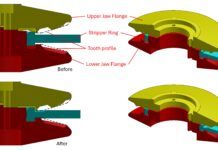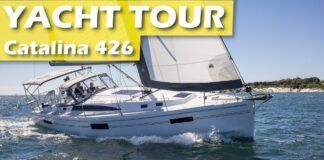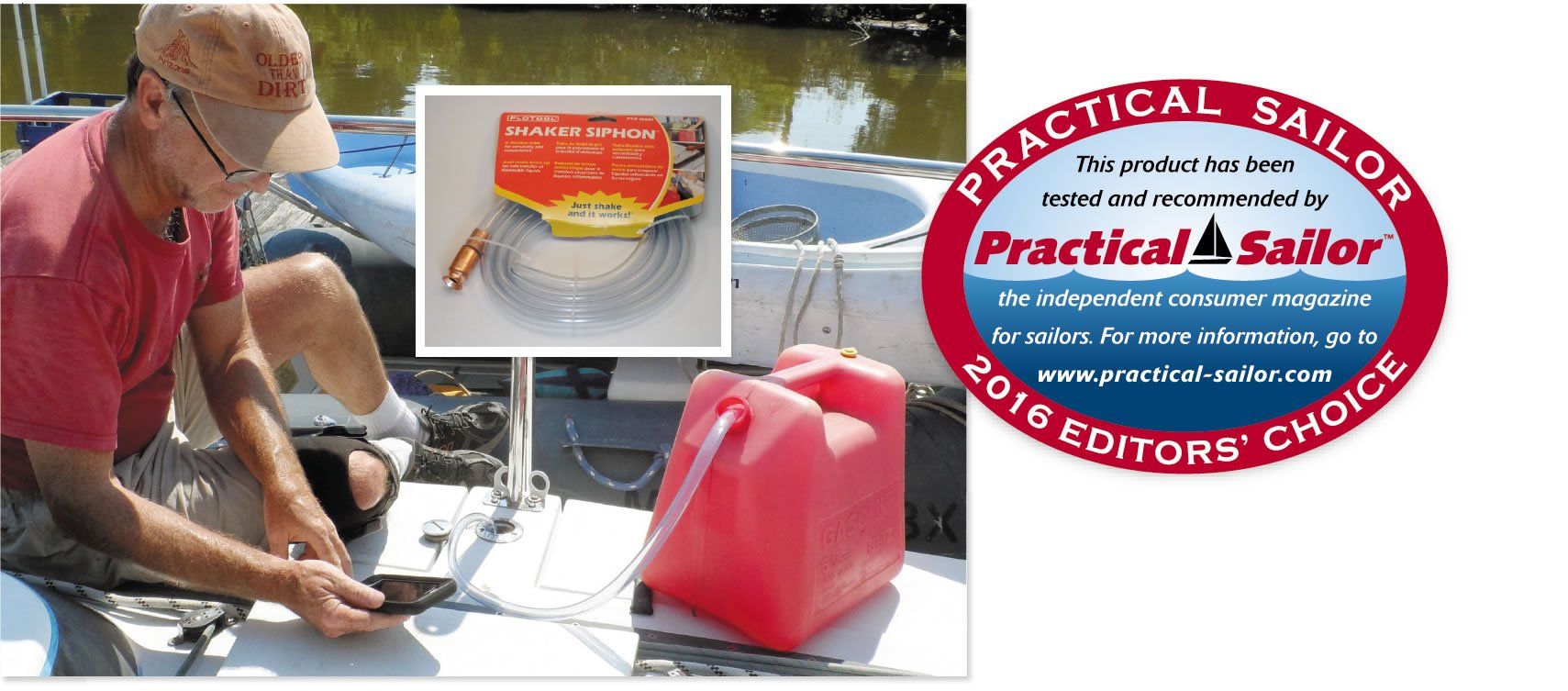
Each fall, Practical Sailor editors pick through the best test products of the past year to find the cream of the crop for our PS Editors Choice roster. To be named to the list, products must earn the Best Choice rating among their respective peers and clearly stand out above others in their field.
Chosen from test products covered in the September 2015 through the August 2016 issues, this years Editors Choice picks represent nearly every category of marine gear-from safety to maintenance to rigging and deck gear. These products are the if-money-were-no-object picks. Budget-minded and small-boat sailors may be better suited with our Budget Buy or Recommended picks in certain test categories; for more on those products and details on testing protocols, refer to the online archive articles cited in this report.
Maintenance
Fuel overfill protection
In the December 2015 issue, we mounted a search for products that would prevent the long-standing problem of fuel spills during fillups. Testers evaluated nine different solutions.
The standout jerry-can spill preventer was the FloTool Shaker Siphon from Hopkins Tools (model 10801). It was surprisingly fast, safe, and did not require holding the can. A few vertical shakes of the device get the shaker siphons flow started. The claimed flow rate is 3.5 gallons per minute, but in tests, we averaged 2.7 gallons per minute. Thats comparable to the new CARB jerry cans, without the holding and dripping. Its performance and ease of use earned the FloTool the Editors Choice pick for a jerry-can spill preventer. And with its budget-friendly $7 price tag, every boat should have one coiled away, just in case.
There are two types of devices that prevent spills at the fuel vent: in-line traps that stop the fuel before it comes out of the vent and devices to catch it after it comes out. We prefer the inline trap design, which keeps fuel vent filters from being contaminated with fuel in the event of an overfill.
The top performing vent-spill preventer in our test, and the Editors Choice pick, was Parker Filtrations LifeGuard LG100 three-stage separator ($150). Rated for 50 gallons per minute, it is designed to collapse fuel foam and return it to the tank, as well as prevent surges from overfilled tanks. Weve used one for years, and it has performed perfectly. Parker also makes the LG50, which is rated for 20 gallons per minute, large enough for most sailors needs.
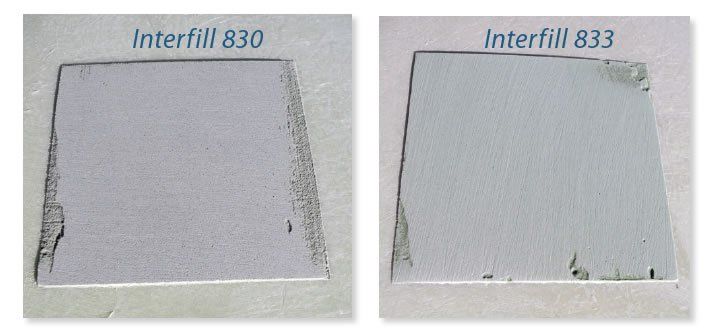
Pre-thickened Epoxy Filler Kits
Breathing life into an older fiberglass boat always entails more work than expected, but for a boat owner with the time, skill, and do-it-yourself inclination, it is often worth the effort. Whether the refinishing project is big or small, youll need a good working knowledge of filling and fairing products to address dings, scrapes, gouges, cracks, and crazing.
Using a pre-thickened, epoxy-filler kit (instead of a mix-your-own) offers several benefits for the DIYer, including batch-to-batch hardness consistency, working time, and adhesive reliability.
In the July 2016 issue, we compared six pre-thickened, kit-type fillers and fairing compounds that are specifically designed for marine use; we tested kits from Interlux, System Three, Mas, and Jamestown Distributors (Total Fair).
Our evaluation examined key features of application: sandability (shaping), resistance to sag, cure time, hardness, and adhesion.
By the time the sanding dust had settled in our tests, Interlux had swept the field, earning the makers three pre-thickened kits a place on our Editors Choice list. Interluxs Watertite, Interfill 830, and Interfill 833 epoxy fillers each stood out in testing. Which Interlux kit is right for you will depend on the project at hand. Watertite is an epoxy filler that comes in an easy-to-mix 1:1 ratio; Interfill 830 is a lightweight profiling filler; and Interfill 833 is a creamy fairing compound that fills pinholes as well as larger scrapes and gouges.
The 830 profiling compound is easy to apply, easy to sand, and is sag resistant. Its the right choice for major keel fairing and for coping with larger surface-area imperfections.
Interfill 833 is a less viscous, creamier epoxy putty that is optimized as a cure for scratches and scrapes above or below the waterline. A 50/50-mix filler, the 833 is more of a glazing compound than a high-build filler. It is often used for the second stage in a fairing project, after the surface has been profiled with Interlux 830. Testers liked the 833s sandability, adhesion, and low void content.
Watertite was the easiest to spread and delivered the hardest surface cure. It is a great choice for final fairing (glazing) above or below the waterline and makes for a good, all-purpose fairing compound.
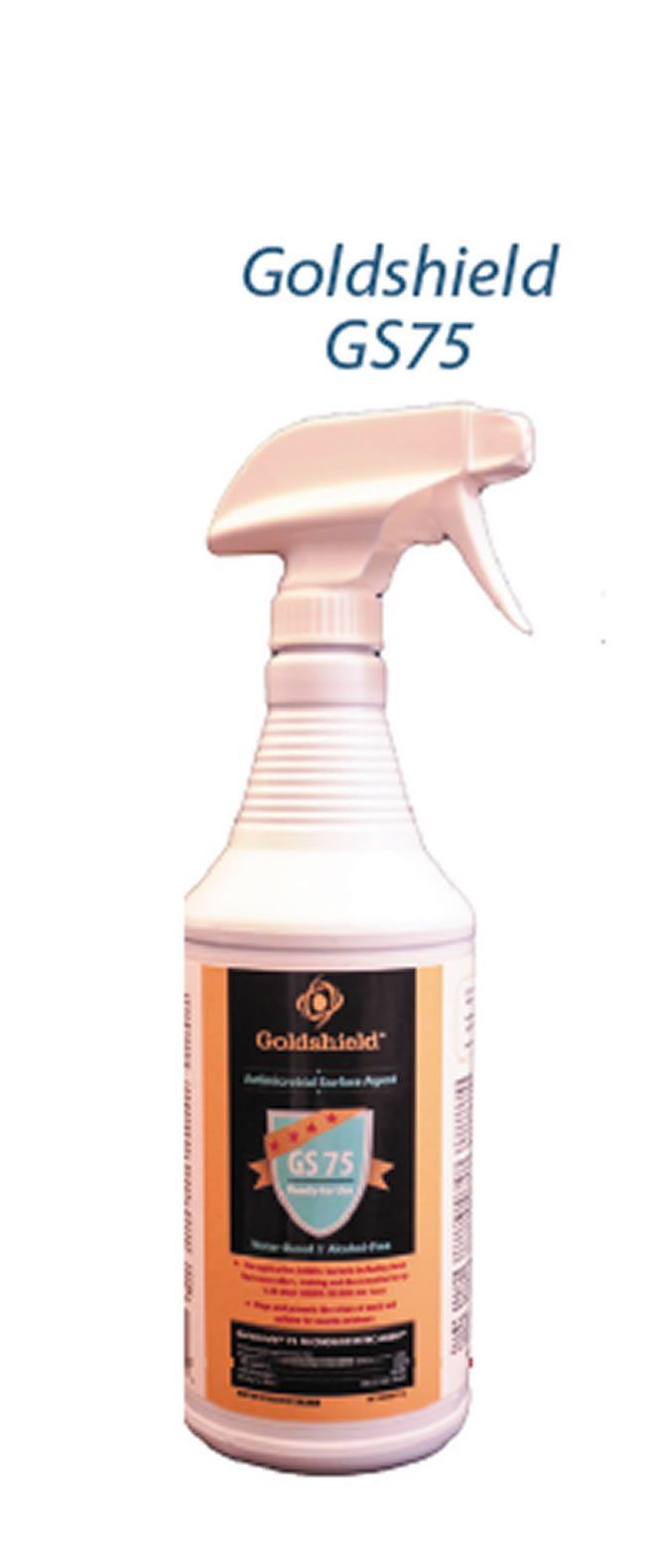
Clear-vinyl Protectants
When choosing protection for your clear-vinyl windows, you want a product that will work for the long haul. In the January 2016 issue, we reported on the two-year performance of a host of clear-vinyl sprays and creams in our on-going, five-year test. Imar Strataglass 302 cream and Star brite View Guard liquid protectant, the top two-year performers, also earned places on our Editors Choice 2016 lineup.
The test field comprised spray cleaners, which need to be applied every few weeks and focus on cleaning and shine, and creams or pastes, which are applied quarterly, provide a thicker film, and require more effort to apply; all claim ultraviolet (UV) protection.
We tested the protectants on OSea and Strataglass coated vinyls, Regalite and Crystal Clear uncoated vinyl, and on old, restored vinyl. The test panels were subjected to 24/7 weather exposure, and those that rated well after four months advanced to onboard testing.
The cream Imar Strataglass 302 Protective Polish cleaner-wax led the cream protectant field, producing a smoother feel and offering a more durable water repellency and dirt shedding. It easily produced a mirror gloss and was among the most effective products for restoring gloss. At nearly $30 for a 16-ounce bottle, it is expensive, but you only use it a few times each year, so the supply should last. It is the only polish endorsed by the maker of Strataglass vinyl for use during the warranty period.
The inexpensive Star brite View Guard cleaner (64 cents per ounce) was handsdown the best liquid protectant at the two-year mark. It polished to a nice shine and was a standout for its ability to shed water and improve wet-weather visibility; it also was our favorite to use on the test boat. While all of the cleaners produced an acceptable shine, the View Guard was superior in both ease of cleaning and repelling water.
A practical routine for the typical weekend/seasonal sailor is to use the Star brite View Guard in-season, when the windows are cleaned more often, and then follow it with the Imar cream in the spring, mid-season, and fall.
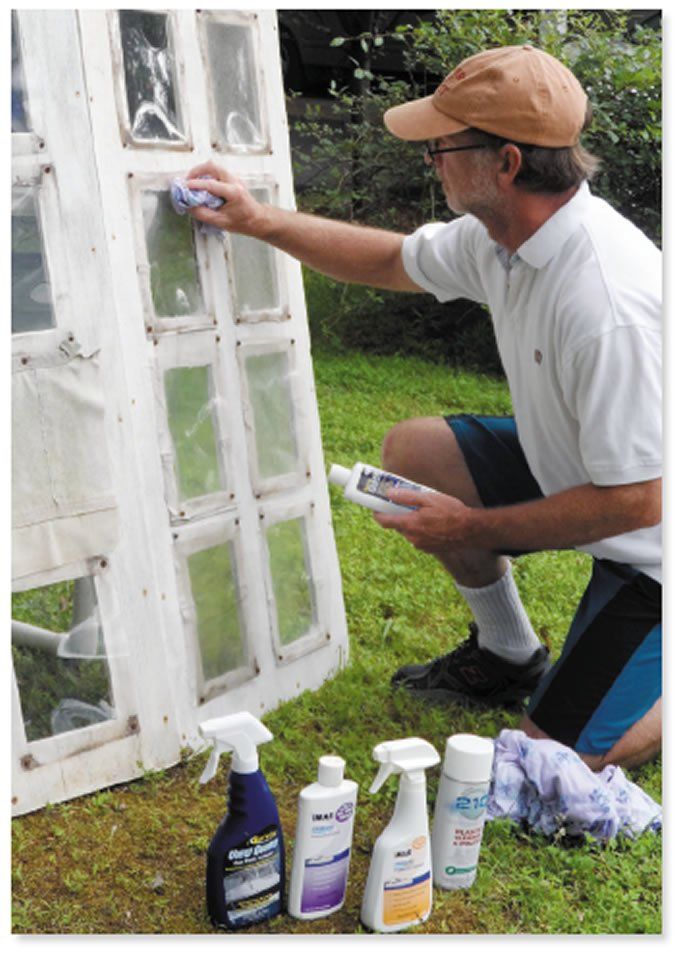
Mold & Algae Cleaners
Those black spots on the deck, lines, and canvas probably arent mildew. They are more likely black algae and lichens, and youll need a different arsenal to take them out than one youd use against mildew. In the September 2015 issue, we took a look at mold and algae cleaners/protectants based on quaternary amines, both silicone and benzyl substituted. Silicone quaternary amines offer better water resistance, while more common benzyl amines (ubiquitous in non-bleach sanitizing products) offer better economy for cleaning and mildew prevention inside the boat. Testers compared the performance of Elite Marine Shield and Gold Shield, two silicone-substituted quaternary amines, with two benzalkonium chloride (BAC)-based swimming pool algae eliminators. (For an explanation of quaternary amines, and links to past reports on mildew treatment, see the Confounding Mildew Wars, Nov. 4, 2013, blog post.) Our benchmark for this type of protection is our DIY blend, Formula B, which costs just pennies to make (see the homemade mildew preventers blog post online, Oct. 14, 2013).
We tested each product on Sunbrella, dock lines, rain gear, shoes, and nylon PFDs that were stored in damp locations, both exposed to the elements and sheltered. The test found that Goldshield was the most effective mold and algae preventative for treating acrylic, nylon, canvas, and interior upholstery, earning it the PS Editors Choice honor.
Based on a silicone-substituted quaternary amine salt, Goldshield GS5 and GS75 claim to have antimicrobial properties that can last up to 50 laundry cycles. We tested the concentrated GS5, and it performed very well on life jackets, preventing all growth, even after it was exposed to a full year of rain and partial sun. It showed better wash-off resistance on polyester and nylon when exposed to rain than other tested formulas. It is available both in ready to use form (GS75; 1-percent active; $195 for one gallon) or as a concentrate (GS5; 5-percent active; $20 for a 32-ounce spray bottle; or $195 for one gallon, which provides 6.5 gallons of ready to use product at .75-percent active).
We still recommend Formula B for treating cotton and wood.
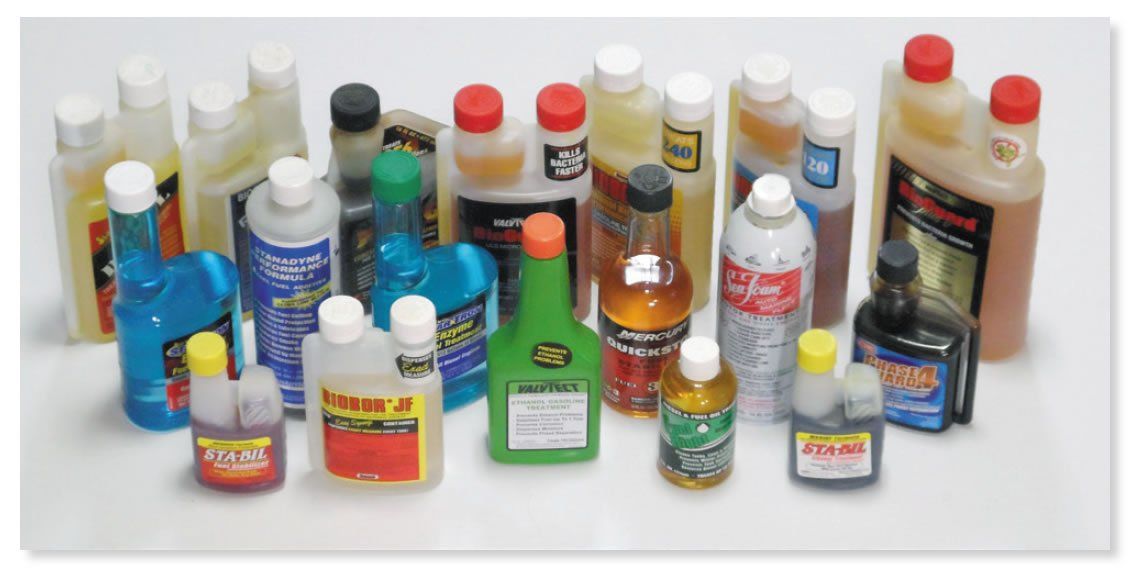
Overall Fuel Additive
A November 2015 article examined fuel additives that offer the best overall protection for long-term storage stability in both gasoline (E-10) and ultra low sulfur diesel (ULSD). For the report, we followed standard test methods for fuel storage stability. The test field was a cross-section of products claiming to improve storage stability as well as performance additives that are often used as storage additives.
In the end, the best overall choice for a diesel storage additive was the combination of Star brites Star Tron Diesel and Hammonds Biobor JF. In biocide testing trials (Star Tron is not marketed as a biocide), Star Tron showed properties that complimented Biobor JF (killed different strains), making the pair a powerful one-two punch. While this blend requires adding two products, based on our testing, it is the Best Choice overall for a diesel additive and deserving of a place on the Editors Choice roster. Star Tron provides complimentary anti-bug activity, good anti-aging properties, and superior corrosion protection.
For gasoline storage, testers liked Hammonds Biobor Ethanol Buster (EB), which also earned a spot in the Editors Choice lineup.
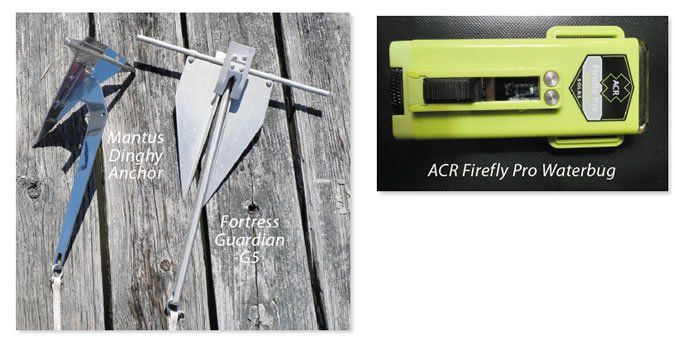
Anchoring and Mooring
Dinghy Anchors
Sailors spend considerable time pondering their anchoring arsenal for the mothership, but what about the dinghy? In the December 2015 issue, we evaluated five small, easy-to-manage anchors weighing 2 to 3 pounds. The test field included: the Guardian G5, a scaled-down Fortress; the Lewmar Claw, a descendant of the Bruce anchor; the new Mantus Dinghy Anchor, a scoop-type anchor; a 1.5-pound Seafit Folding Grapnel; and a typical, 8-pound mushroom anchor.
Our test protocol, similar to tests we have done on primary anchors (see PS February 2015 online), was carried out using multiple boats, including a 34-foot catamaran. Each anchor behaved similar to its big brother, with the caveat that the smaller anchors have difficulty with hard bottoms and clog more easily with weeds and debris.
The Mantus Dinghy Anchor clearly stood out in tests, earning it a comfortable spot on our Editors Choice lineup. The small Mantus offered strong holding and perfect veer behavior, making it a good choice for anchoring the dinghy out. The Mantus is the only 2-pound anchor weve ever felt safe leaving the dinghy attached to.
We tested the stainless version ($170), which features a clever and simple mechanism for disassembly and flat storage. However, the welded, one-piece galvanized version ($48) strikes us as more practical for the sailor looking for a dinghy anchor.
Safety
MOB Lights
A well-prepared offshore sailor will carry essential personal safety gear on him at all times while on deck during a passage; this includes distress-signaling devices. In the February 2016 issue, we scrutinized six man-overboard (MOB) lights from ACR, Electric Fuel, North American Survival Systems, and West Marine. While there are a variety of compact lights that could be used as man-overboard locator lights, we focused our test on products designed for this use.
The personal distress light evaluation included tests in the lab and in the field, including an on-the-water visibility test from 0.62 nautical miles away. We compared the effectiveness of each lights flash pattern and rated their luminance, omnidirectional visibility, means of attachment, and construction quality. We favored 360-degree horizontal visibility, hands free self-alignment, and easy attachment and wearing options.
The markets most prominent company in the test was ACR, so it was no surprise that the companys LED Firefly Pro Waterbug was testers top pick, and the only safety product to make it on the Editors Choice list this year.
The water-activated Firefly Pro Waterbug has a robust plastic housing that meets military specifications and has both international (SOLAS) and U.S. Coast Guard approval. In addition to its 60-cycles-per-minute, LED strobe, the unit will deliver repetitive SOS signals and can even be turned on as a continuously operating white light. Another big plus is the extended battery life; in tests, it ran in strobe mode on two AA Lithium batteries for 54 hours. The second brightest light in our tests, the Firefly Pro earned top billing because of its overall performance and water-activation feature.


















